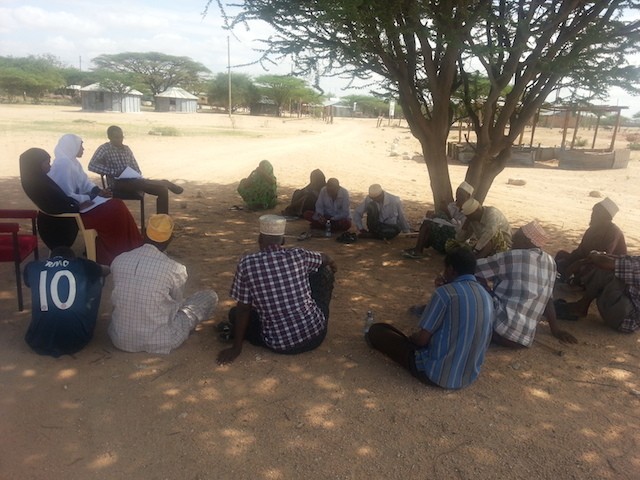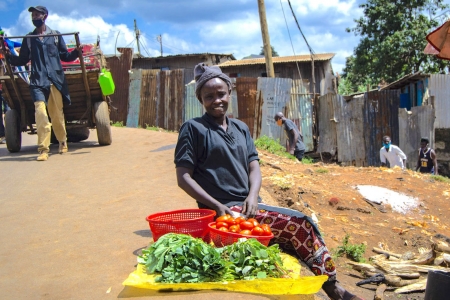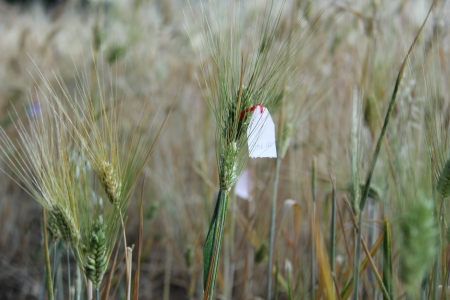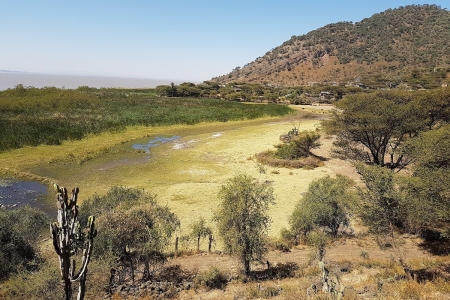This blog post was originally published as part of the ‘Talking Science’ Blog Competition.
Making better development decisions with decision analysis tools
Making decisions is difficult. Most of us spend a lot of time procrastinating about decisions in our everyday lives, struggling to weigh pros and cons and thinking through ‘what-if’ scenarios. For big decisions, like buying a car, we may do a bit of research; but most of the time, we simply follow our gut feeling as a guide. This is okay, as long as we’re right most of the time, and the potential harm from taking a bad decision is limited.
 Focus group discussions in Madogashe, Kenya, where stakeholders are engaged in sharing their opinion regarding the pipeline project.
Focus group discussions in Madogashe, Kenya, where stakeholders are engaged in sharing their opinion regarding the pipeline project.Photo: Sarah Ogalleh/CETRAD
Big development decisions
But do we want those who make decisions on some of the biggest issues in development to also follow their gut instinct? Such decisions can easily involve millions – even billions – of taxpayer dollars. Poor decision-making can make this money evaporate without much effect. Worse even, effects can be negative if people adjust their behavior in the hope of new opportunities that don’t materialize.
Most of us probably expect big decisions to be informed by more ‘scientific’ methods than we normally use. But especially in many developing countries, there is little reliable data on important issues, making it hard to base decisions on what we typically call ‘facts’.
In almost all cases, the impact of a decision simply can’t be forecast with much certainty, because various ‘unpredictable’ factors affect the system we’re trying to influence. Such factors could be the weather, climate change, the political environment or simply people’s enthusiasm for a new idea. It would be desirable for decision-makers to consider all these factors, but we normally can’t gain certainty about all of them. We could do detailed research on one or two factors, but would that be sufficient for better decision-making?
Business analysis methods
The challenges faced by decision-makers in development aren’t new or unique. Decision-makers everywhere decide on big risky projects in the face of imperfect information. And business analysts have developed useful tools to help them.
At the World Agroforestry Centre, we’re exploring and adapting such approaches for development contexts. We use participatory processes to develop models that show the impacts of decisions.
Together with a team of stakeholders, i.e. all parties affected by the decision, we think through all implications of a decision, including all its costs and benefits, as well as all risks that could undermine the intended decision impacts. We encourage stakeholders to bring up everything they consider important, regardless of how easily they think it can be measured.
This approach allows the inclusion of environmental and social impacts, risks to decision implementation, and other issues for which we don’t have hard data and which are therefore often not adequately considered during decision-making. This enables us to do more comprehensive (or ‘holistic’) forecasts of decision impacts than approaches that consider only variables that can precisely be quantified.
We translate stakeholder inputs into mathematical equations, and the team agrees on plausible ranges for all variables. The model can then give us a range – or rather a probability distribution – of plausible decision outcomes. We can also identify the uncertain variables that we would benefit most from measuring. We can therefore make forecasts of decision impacts in the face of our current uncertainty, and we can define priorities for decision-oriented research.
Water for Wajir
One of the first applications of our approach was a proposed pipeline project in northern Kenya. In this project, the future water supply for the rapidly growing city of Wajir is proposed to be ensured by tapping a politically sensitive aquifer near the town of Habaswein, about 110 km away, and piping water to Wajir. Many residents of Habaswein are strongly opposed to this idea, fearing for the reliability of their water supply.
Our decision analysis showed that hydrological risks were indeed considerable, but they were trumped by the risk of political interference due to inadequate benefit sharing. The greatest uncertainties were related to valuing the benefits from better water supply (e.g. regarding reduced infant mortality), as well as the financial viability of operating the water supply system. This analysis allowed us to recommend modifications to the project design to help mitigate risks and enhance the project’s probability of success.
The way forward
Our initial experiences using business analysis methods in development contexts have been very encouraging. Stakeholder feedback was generally positive, and many stated that being involved in the research process improved their understanding of the decisions under consideration. The knowledge gap analysis highlighted critical issues for research that would likely remain unstudied without our kind of analysis.
We think that our approach can improve decision-making in development and facilitate better allocation of development and research funds. More effective use of scarce development resources can then take developing countries one step further towards meeting their Sustainable Development Goals.













